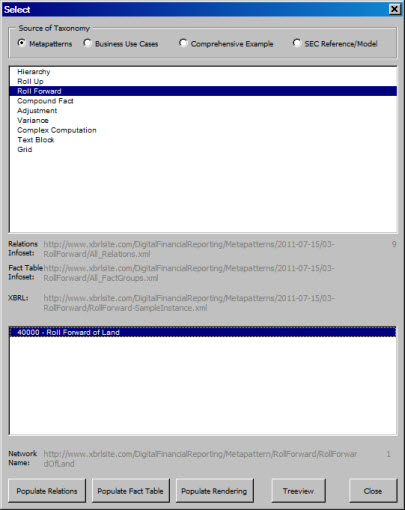BLOG: Digital Financial Reporting
This is a blog for information relating to digital financial reporting. This blog is basically my "lab notebook" for experimenting and learning about XBRL-based digital financial reporting. This is my brain storming platform. This is where I think out loud (i.e. publicly) about digital financial reporting. This information is for innovators and early adopters who are ushering in a new era of accounting, reporting, auditing, and analysis in a digital environment.
Much of the information contained in this blog is synthasized, summarized, condensed, better organized and articulated in my book XBRL for Dummies and in the chapters of Intelligent XBRL-based Digital Financial Reporting. If you have any questions, feel free to contact me.
Entries from November 13, 2011 - November 19, 2011
Relations, Fact Table, Rendering Viewer
I created a prototype application using Microsoft Excel which allows you to see even better how using infosets, rather than working with XBRL directly, can make your life easier. The Excel prototype is a great learning tool also. It lets you better see what the information articulate by XBRL communicates.
The prototype hooks directly to the metapatterns, business use cases, comprehensive example, and SEC reference/model samples/examples which I have created. It lets you have a closer look at the meaning of information articulated within an XBRL taxonomy and XBRL instance. All the business use cases which I have run across are covered.
The rendering does not work as well as I want at this point because it does not leverge the information models (the metapatterns) yet and it does not support more than one [Axis] on columns or rows.
All the infosets have been pre-processed for these samples/examples in advance for these examples (complements of XBRL Cloud) which contributed two style sheets which transforms their infosets to the format which I use. That means that this application does not even need to use an XBRL processor. The infoset format is my strawman implementation of the Business Reporting Logical Model (BRLM) created by the XBRL International Taxonomy Architecture Working Group. I have since abandoned that implementation format in favor of the US GAAP Taxonomy Architecture model which is used by SEC XBRL financial filings. That model is documented here. The two models are, however, interchangeable.


